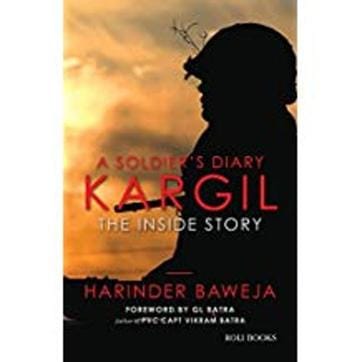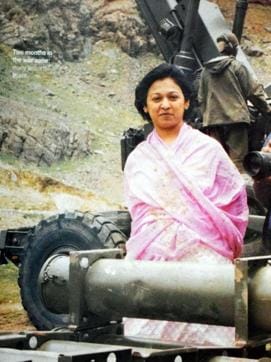The Untold Story of Kargil
26 July is celebrated as Kargil Vijay Diwas. Senior HT journalist Harinder Baweja, who covered the war from the frigid heights, writes about the young men who saved the day for the country

One evening, I was standing by a mountainside in the frigid heights of Kargil. Restless soldiers paced up and down. Their comrades had been killed and bodies were being brought down from the unsparing heights. It would soon be dusk and the waiting soldiers knew they had a long night ahead: bodies to take care haof; paperwork to be completed; families to be informed and coffins to be airlifted to Srinagar for the final journey home.
Against the fading light, the silhouette of the stretcher-bearers can finally be seen. Eight bodies come back, faces blown, uniforms blood-soaked. The soldiers take a deep breath and start the process of identification, but wait, one body is beyond recognition. Who is this? Who is this?
An army battalion is like one big family. Not being able to identify one of your own brings immeasurable pain. He is finally identified by the service number on his belt. The rest of the evening is spent in silence. I retire to the tent, where a unit has agreed to let me stay, in defiance of orders from the Brigade headquarters to not allow journalists entry after sunset.
Kargil was the first televised war, broadcast live into drawing rooms, but up in the frozen heights, the picture was very different from what army commanders and politicians wanted us to believe. Patriotic frenzy was being whipped up with the arrival of each body bag, dutifully saluted by ministers in Delhi and chief ministers in states.
One question kept troubling me: what was happening in the heights? Why were soldiers dying such brutal deaths?

One afternoon, I made my way to the Brigade headquarters in Drass. The questions were the same. An army colonel asked me if I wanted to see something that wouldn’t let me eat for the next three days. Before I made my way to Kargil, I had stomped around in the conflict zones of Punjab and Kashmir and had seen enough blood and gore. What did the colonel want t show me?
“No photographs, please,’’ he said as he led me out of his office into a courtyard. He called a jawan and asked him to remove a sack hanging on a tree trunk. The head of a Pakistani soldier had been pinned to the tree. None of the Pakistani intruders had been captured alive but this, according to the colonel, was proof that it was only a matter of time.
The enemy head, a grisly trophy, became an exhibition piece. It was there, pinned on the tree, for anyone who could bear to look at it. The sight of the pinched face, hair intact, served the macabre purpose of motivating the troops. Or at least, that’s what some Brigade officers believed. It had been a few weeks since the war had begun in May 1999, and this was the first sign that the enemy was now neither invisible, nor invincible.
The fact that an enemy head was needed to motivate troops, led to more disturbing questions. Why was the morale so low? Artillery fell like metallic rain. The number of wounded and dead kept increasing.
Long after the guns fell silent and I returned to Delhi – after a ceasefire mediated by then US President, Bill Clinton – the questions started to haunt me. I would wake up at night to the sound of gunfire in my head. The faceless body of the unidentified soldier kept me up for hours every night.
The only way to deal with the emotional baggage was to return to Kargil. The battalions involved with the sharp but short war were in wind down mode and had the time for long conversations. They had also put down their experiences in what the army calls, ‘action taken’ reports.
The answers to all the troubling questions lay in those files and long conversations that continued through the night. The hair-raising conversations explained the shattered limbs, the faceless bodies, the screams of agony, and unending, nerve numbing explosions of artillery.

Battalion after battalion had been ordered into Kargil with virtually no information of who the enemy was, or indeed, where exactly the enemy was located. ‘Some rats have come in,’ was what the commanding officers had been told and the then defence minister George Fernandes had claimed that the intruders would be thrown out in 48 hours.
The 48 hours stretched to three long months. Units were sent in to fight a high-altitude war without acclimatization, without winter clothing, with inadequate weapons and no intelligence. The maps they were given were completely outdated. Soldiers spent hours looking for geographical features that did not exist because the soil had eroded over the years. Soldiers carried missiles 17,000 ft high but they did not fire. The warheads had expired.
Read more: Kargil’s children
The untold story of Kargil had not been broadcast into living rooms. The body bags served the politicians well but Kargil was about the young infantry officers who saved the day for the country. India fought in fatal terrain but it won because of the unusual men.
I had to write the book. As an ode to the soldier and as a vent for my own emotional journey.
The revised edition of Kargil; The Inside Story by Harinder Baweja has just been released.






